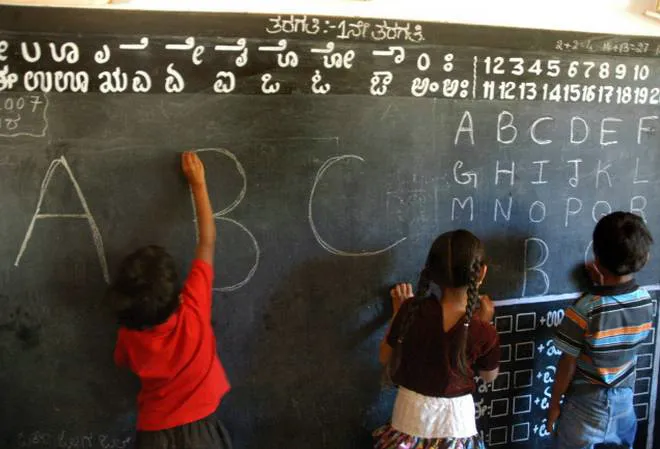
In a world still stuck in various stages of lockdown imposed since January, the biggest change has been in the form of work and study from home, the two daily routines that were predominantly not done at homes before the outbreak of the pandemic. While telecommuting was a matter of intense research and advocacy in many countries, the practice of work from home was never as prominent just a few months ago as it has become today. The same remains for school and college education.
This remarkable shift to online activities doesn't appear to be any way a temporary phenomenon. Companies like Tata Consultancy Services (TCS) have already announced that 75 percent of their 4.5 lakh employees will continue to
work from home till 2025. Schools and universities have also embraced the
'learn from home' concept by transitioning to education online, a trend that is bound to continue well after the pandemic perishes.
In the post-COVID world, people will thus spend maximum time at home and the “family” is likely to stay more connected for the foreseeable future in the 21st century. However, the linguistics of communication will be totally different for home conversations between families, during online classroom education for students and while working from home for professionals. Therefore, as the world prepares itself for radical lifestyle changes, it will also have to radically alter the way it communicates. In this changed global linguistic culture, only those regional languages that adapt to the transformations would be able to survive.
In a future scenario in which online education is likely to gain more prominence, creating a variety of online study material becomes inevitable. Converting textbooks into PDFs will not suffice. Equal focus would have to be given to generating rich digital content in regional or local languages in ways that can engage students through interactive multimedia and games. Regional languages that would be able to come up with such innovative content will become popular and nudge parents to teach their children in their mother tongue and inspire children to do the same. However, language, as an all-encompassing medium of communication, goes far beyond the confines of regional-medium schools and regional-language books.
Thanks to globalisation and the ease and pace of international travel, it took only a few months for the pandemic to spread from China to the rest of the world. Therefore, the first attempt to prevent the spread was by stopping movement of people. But as physical communication continues to be curtailed, the speed of information propagation through digital communication has increased at an unprecedented pace. Although the term “
data is the new oil” was coined in 2006, its real worth as a truly global currency has been understood only since the beginning of 2020. But its real worth can never be achieved unless digital information or content is represented through different linguistic mediums and not restricted by the predominance of English.
For global IT giants like Google and Microsoft, who have invested in the ‘localisation’ of content in India, the changed scenario in the post-pandemic world will make their investments go much beyond the profit-making objective. The evolution of content will therefore have to be based on the logic of front-ending one language and back-ending it with another.
The Medium of Language and the Language of Mediums
There are varying degrees of differences in communication between two individuals, two families, two groups, and two distinct language speakers. For their survival and growth, regional languages need to be interactive and interchangeable. Sadly, the politics of language that has often fuelled violent protests in the country, have placed undue demands for refinement of language, with rational thinking getting blurred by parochialism and prejudice. Language activists and state governments must well understand that institutions such as Oxford have survived over the centuries only because of the openness and linguistic freedom they enjoy to accept and include new non-English words every year.
Language Labs
Odisha’s Kalinga University has conducted an innovative experiment with ‘
language labs’ to help its predominantly tribal students increase their learning capabilities from their local dialect to Odia and further from Odia to English. The university conducts various experiments to understand and enhance communication between children having different levels of language capabilities. From information boards to computers, efforts are being made to make language effective as a medium. This experiment should be done with all the other Indian languages too.
For example, 'video' is one of the most popular digital formats. However, there is a dearth of resources for even basic tasks such as subtitling or dubbing in regional languages. This void can be filled by language laboratories. This will bridge the gap between different languages and facilitate smoother communication between them, achieving the objective of localisation in the true sense. It is also important to enhance the ‘language’ tab of regional languages in all the widely used digital payments, online banking platforms, mobile apps and e-commerce. However, the ongoing effort in this regard in Marathi, Gujarati and many more Indian regional languages will remain incomplete without adequate government assistance. The time has come for the state governments and linguistic organisations to collaborate.
Sustaining regional languages in an increasingly digitalised world
The thrust to online sources for both work and study thanks to the lockdown should be viewed as an opportunity to ensure not only the survival, but growth of India’s rich regional languages. Here’s what we must do to exploit the current trend to go online to India’s sustained advantage:
- The most important task in the new world of 'data' would be generating regional-language information in different formats and bringing them on different digital platforms. The more rich, authentic, and relevant content we generate, the more a regional language will be able to meet the challenges of tomorrow.
- The focus should be on creating interesting, engaging and interactive material available on the internet to learn or enjoy all the variations of a regional language. Developing digital platforms like Coursera with innovative content must be set up to learn a language. This will also help India leverage the increasing interest among the people of different countries to learn Indian languages.
- The lack of regional language fonts has been brushed under the carpet for a long time. Unicode, which is predominantly used as a default for regional language fonts, is restrictive. It is not used in the publishing business. Increased thrust must therefore be given on designing new regional language fonts.
- Various concepts are used on the social media platforms to group similar types of information. For example, hashtags or trends. Local language data should similarly be grouped using such concepts.
- With the greater acceptance of digital media post-COVID-19, the language which has traditionally been used as a form of verbal, written, or audio-visual expression will have to be expanded for adapt to the unique needs of the new media. Emojis and short forms may have been considered inappropriate to the conventional linguistic culture, but their importance cannot be undermined in the fast-progressing digital world.
- The possibilities are endless, but India lacks capable manpower to achieve any of the above. We don't have organisations with the potential to develop such skilled manpower. The governments across the country must therefore frame policies to support institutions working for the welfare of linguistic growth.
Just as it is essential to maintain the importance of language as a medium, it is also necessary to understand and learn the new language of the new medium. Just two different languages must be made interactive, different mediums must also be interactive. At least the political parties that have come to power based on linguistic agendas should start taking decisive steps to protect India’s linguistic diversity that makes India and ‘
Indianness’ complete. Veteran Kannada writer Shivaram Karantha said, "
Mother tongue will be the language of the kitchen." He might have never imagined that his statement would come true in the context of a pandemic and its devastating fallout.
The views expressed above belong to the author(s). ORF research and analyses now available on Telegram! Click here to access our curated content — blogs, longforms and interviews.



 In a world still stuck in various stages of lockdown imposed since January, the biggest change has been in the form of work and study from home, the two daily routines that were predominantly not done at homes before the outbreak of the pandemic. While telecommuting was a matter of intense research and advocacy in many countries, the practice of work from home was never as prominent just a few months ago as it has become today. The same remains for school and college education.
This remarkable shift to online activities doesn't appear to be any way a temporary phenomenon. Companies like Tata Consultancy Services (TCS) have already announced that 75 percent of their 4.5 lakh employees will continue to
In a world still stuck in various stages of lockdown imposed since January, the biggest change has been in the form of work and study from home, the two daily routines that were predominantly not done at homes before the outbreak of the pandemic. While telecommuting was a matter of intense research and advocacy in many countries, the practice of work from home was never as prominent just a few months ago as it has become today. The same remains for school and college education.
This remarkable shift to online activities doesn't appear to be any way a temporary phenomenon. Companies like Tata Consultancy Services (TCS) have already announced that 75 percent of their 4.5 lakh employees will continue to  PREV
PREV


